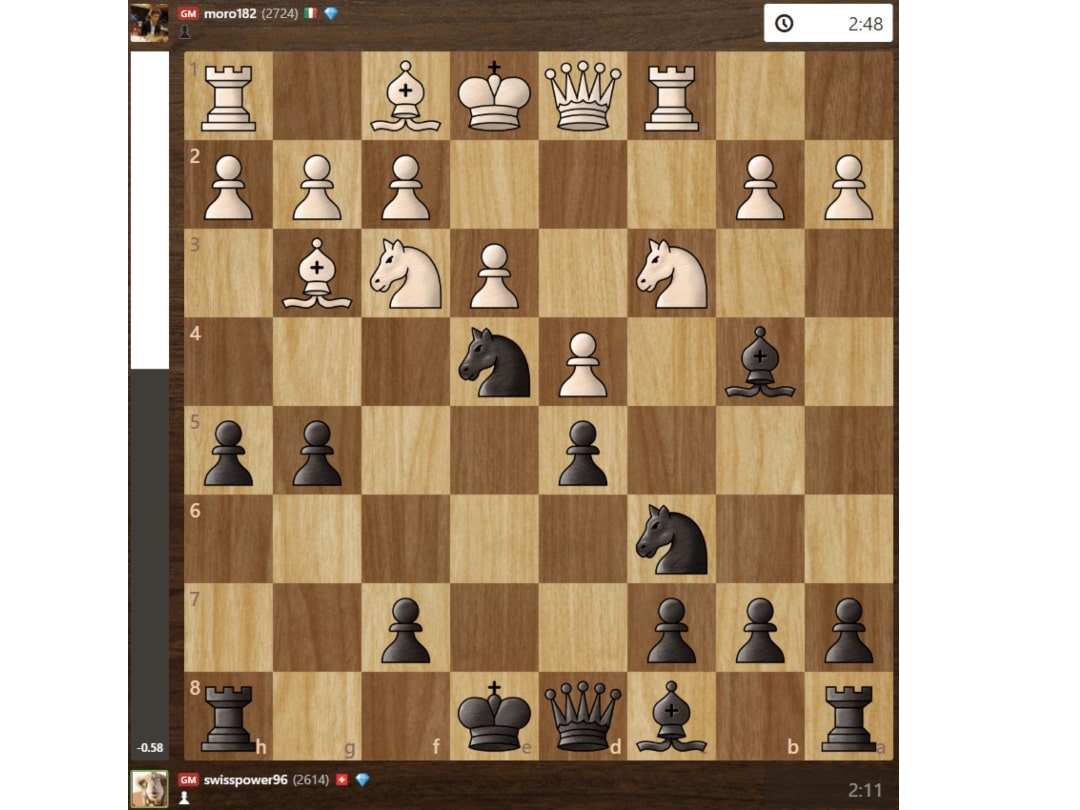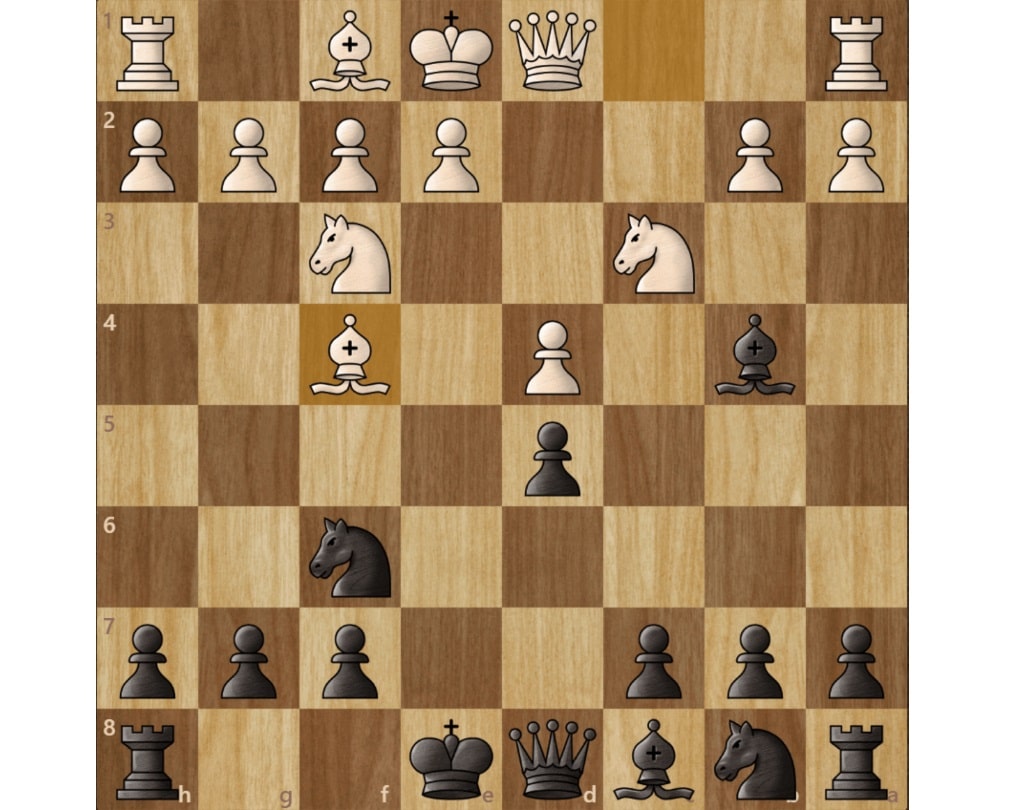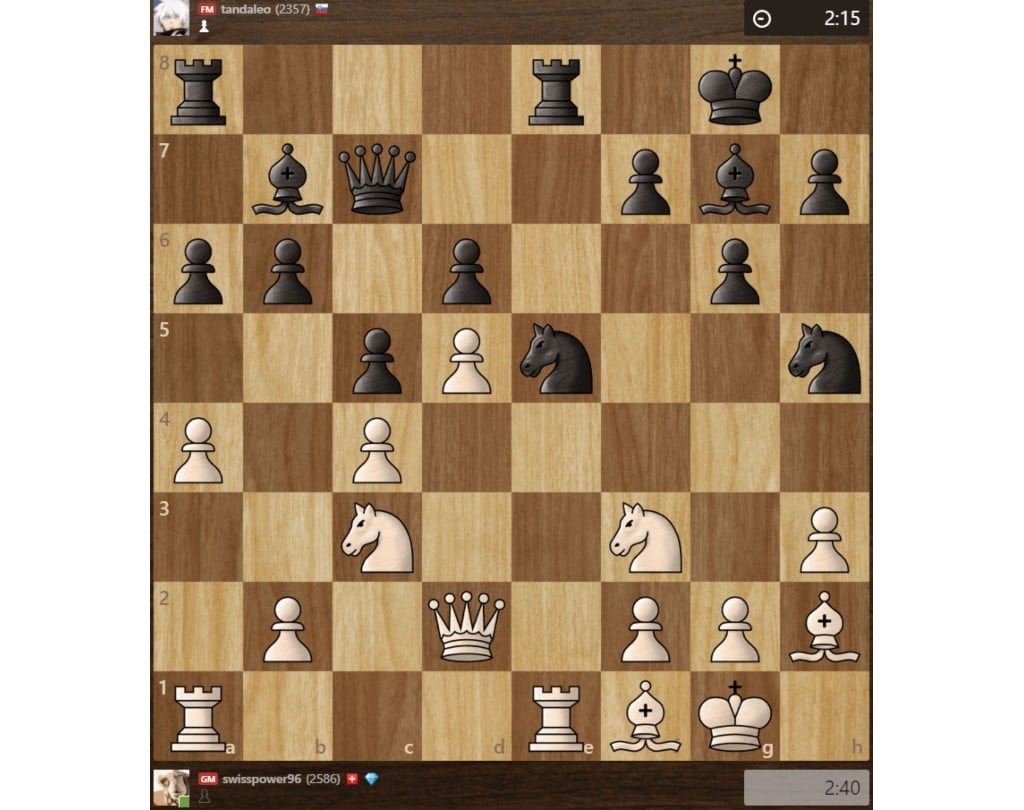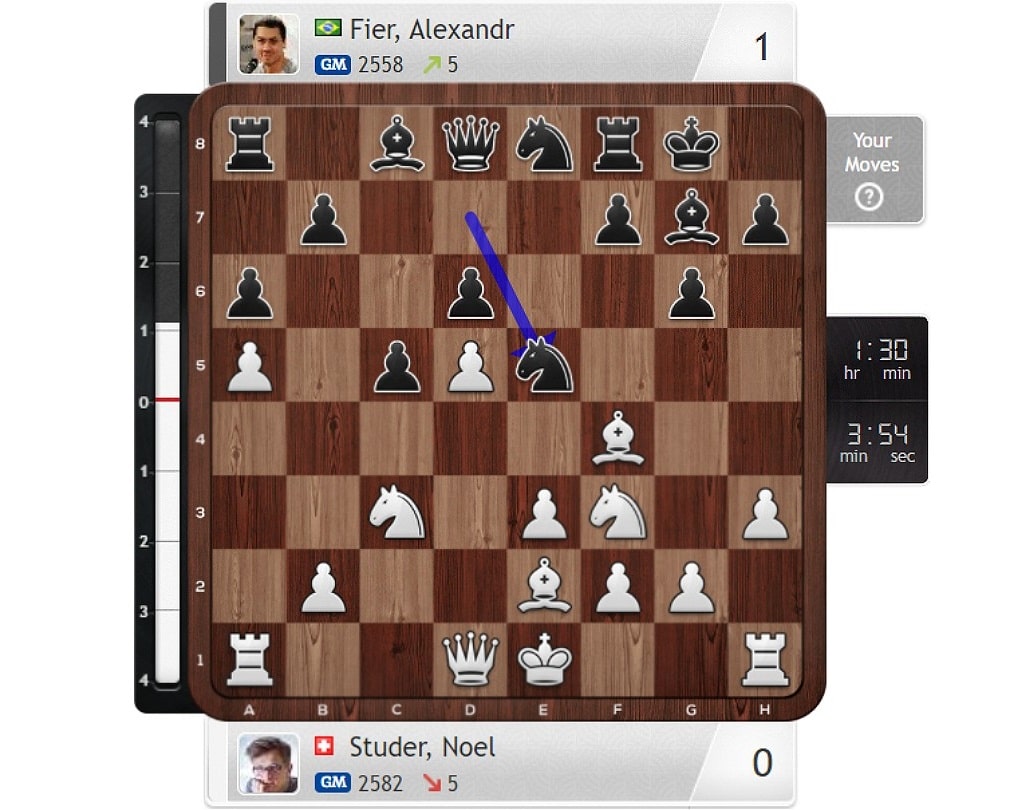Remembering your preparation is not an easy task. Many times when I play games, I cannot remember the full lines. Rather, I have some vague idea of which moves appear in it. This half-knowledge can be very dangerous.
You are somewhere in the middle of remembering and calculating, but you are not doing either correctly. This phenomenon can lead to very weird mistakes early on, even in the games of two Grandmasters.
So it happened to me two days ago in the latest Titled Tuesday on chess.com. Against a strong Grandmaster I was clearly better after 9(!) moves with black!

For full disclosure: while writing this article I saw with great horror that in the position of the above Diagram there was a game Carlsen-Giri Skilling Open 2020.
After some research, I came to the conclusion that the World Champion probably went into this position willingly with some deep ideas. This seemed to be a very risky approach, and one that I do not expect people to try again (because objectively black is on top).
Because of the time investment (40 seconds after the diagram in a 3 Minute blitz game), and the further play of my opponent, I still believe he stumbled into this position because of half-knowledge.
Opening
As Indian Coach Surya Sekar Ganguly explained very recently in one of the prochesstraining classes “you should either think or remember, but don’t mix both”.
At the beginning of a game, you might not be fully in the flow yet. So, it is much easier to follow something that “should be theory” rather than starting to think. And that is why, even after hearing such advice, we are prone to fall back to the routine of “thinking this is some kind of theory”. I hope you and I will avoid this after this article once and for all!
To make the point clear, let’s examine what happened in the above-mentioned game. The position in the game came through the Ragozin Opening: 1.d4 Nf6 2.c4 e6 3.Nc3 Bb4 4.Nf3 d5 (Ragozin) 5.cxd5 exd5 6.Bf4.

Now the Main Line goes: 6…Ne4 7.Rc1 Nc6 8.Nd2 g5 9.Be3! with a very double-edged position. It is important to see that white follows up on Ne4 with Rc1. Let’s see how my game went:
6… Nc6 (I actually mixed it up myself!) 7.e3 a logical move but starting to go in the wrong direction. Now after Ne4! 8.Rc1? (the Pawn sacrifice 8.Nd2 looks like a better chance to hold the balance) g5 9.Bg3 (no Be3 due to the pawn there!) h5 we reach the position from the first diagramm.
So, with two very logical and automatic moves, white screwed up the whole position! Isn’t that amazing?
If a GM stops after 7…Ne4 and starts to think about what happens after 8.Rc1 g5! he will immediately understand, this is dangerous. Thus, he can search for an alternative. But as in the previous line, Rc1 was the right move, it was played instantly with the wrong belief that he is still fully in the book.
So, whenever your theory knowledge goes from 100% sure to “that should be a theory” switch your brain on and think about the most logical move. Then, trust your instinct more than some obscure move that you vaguely remember to be theory. This will save a lot of points. (I will re-read this before my next OTB Tournament, it is mainly a note to myself…)
Pattern Recognition
More surprisingly, this half-knowledge problem can also occur in middle-game positions when using pattern recognition. Funnily enough, I was on the bad side this time in that same Titled Tuesday tournament.

In only 4 seconds I took with the Bishop on e5, which is a huge mistake. After dxe5 my Knight on f3 will soon be pushed away by f5 and e4 (which is possible due to the missing bishop on h2) and suddenly black is on top!
What’s interesting is that immediately after Bxe5 dxe5 I understood that I messed up royally! Horrified by such a huge mistake, I tried to understand the origin of it. And it didn’t take me long to remember the following classical game I played several months ago:

The main similarity is the Knight jumping to e5 and the decision to either take with the Bishop, or the Knight. When preparing for that specific line, I told myself several times: whenever he jumps to e5, take with the Bishop first.
This makes sense in that specific position because dxe5 would win a crucial tempo on my Bishop! The only thing that stayed in my brain was the pattern to take with the Bishop whenever a Knight arrives on e5. This is extremely vague and I should never rely on it.
Switch On Your Brain
In the future, I want to refrain from generalizing ideas that are meant for specific situations only. And whenever I feel an attraction to some weird-looking move, I want to ask myself “does this really make any sense”?
With that small question, I am sure I can avoid such mistakes in the future. And, so can you!
I hope this helps you avoid mistakes even Grandmasters commit frequently.